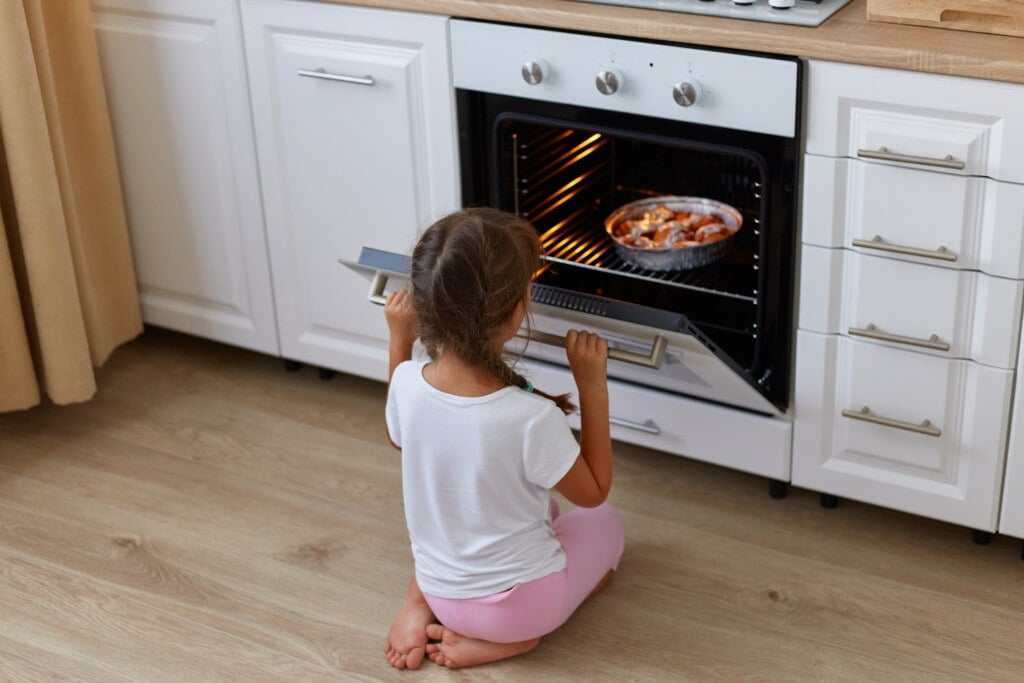No one likes to wait. Not even us grown-ups, so it’s difficult to teach children patience. However, our kids are pretty new at this patience “stuff,” and they haven’t yet had enough life experience or practice to do it well (initially, anyway). A skill required for patience is “delaying gratification,” which refers to a person’s ability to put off some instant reward or outcome for a later reward or benefit.1 Being able to delay gratification is a real-world skill. There are all kinds of situations where waiting and being patient pays off in the long run. Delayed gratification is associated with better quality relationships, higher education, career achievement (and subsequently higher financial stability in later life), and general improvements in well-being.1,2,3
It’s essential that our children learn patience because they must perfect several skills (including distraction, emotional regulation, delaying gratification, etc.) before they can successfully wait. However, it is equally essential to ensure that the opportunities we provide them are age and developmentally appropriate. For example, an infant will not be reasoned with or patient when wet or hungry, but our toddlers can wait a few minutes to be assisted with finding a snack. As our children grow and develop, so does their ability to communicate. This maturation allows us to reason and problem-solve with them. So, I have provided some tips below, but be sure to reflect on your child’s skills and abilities and ensure that they are aligned or just a slight stretch up to new skill development.
Ways to Teach Your Child Patience
1. Show Them What Patience Looks Like
We are our children’s first teachers. If we expect patience from them, we must be able to show them what it looks like. Share with them the struggle or emotions that arise when you need to wait for something. Also, share with them how you will cope and manage this discomfort. This will allow them to see patience in action.
2. Listen to Them Reflectively
By this, I mean listen to what they say, either in their words or actions, and express what you see. Tell them, and acknowledge how hard it can be to wait, or validate that you see them trying to be patient. This will help them know that patience is hard and that you are there to support them, which reduces their distress.
3. Have Realistic Expectations for Them
See where your child is currently functioning and set objectives or requests that are just a slight stretch but not so far out of their reach that they will lose determination or self-esteem.
4. Give Them Puzzles to Do
With a puzzle, they need to wait for the finished piece, so having lots of puzzles of age-appropriate complexity available is a great way to sneak in an opportunity to teach children patience during play!
5. Do Some Problem-Solving with Them
If your child must wait, they are a clear communicator, and you can reason with them, sit them down and do some problem-solving to see if you can find a way through the distress of waiting. Ask them what they could do to fill the time while they wait? Or if waiting makes them feel sad or frustrated, what are some ways to help them manage those big feelings? Could they do something to help prepare them for what they are waiting for? For example, if they want to have a play date, maybe they could help pack and prepare the snacks or get everyone’s jackets.
6. Help Them Practice Mindfulness
Research4 indicates that people skilled at mindfulness are better at being patient. Mindfulness is about being present and letting go of future “stuff” – so they are better at accepting the discomfort of waiting and more accepting of the situation. You can find many resources online or on YouTube to help them learn the art of being mindful to teach children patience.
7. Work Toward a Gratitude Attitude
Research5 also tells us that those with a “gratitude attitude” are more capable of patience. This is thought to be because they are more thankful for what they already have, not desperate or overly driven to some future need or better circumstances. You could start doing gratitude exercises and activities, like a daily gratitude journal, or each day have a family gratitude that you will all reflect on, or potentially at dinner each night when you can all take turns expressing something that happened in the day you are grateful for.
8. Use a Timer for a Sense of Scale
For some children, having a definite sense of time to help them understand how long they need to wait will be helpful. This could be an egg timer or oven timer for more immediate things, like taking turns with toys or games. Or perhaps even a calendar or weekly schedule so they can see the scale of how long they need to wait. Having a sense of the scale will help children and you guide the activities that might be more effective while waiting.
9. Play Lots of Family Board Games
Playing board games is fun, and children get excited that they are having some family time. But they also must practice patience while everyone else has a turn and wait for their turn again. It’s a lovely way to sneak in quality time together as a family and flex those patience muscles.
10. Encourage Them to Save Money
If they earn pocket money, consider holding some aside for savings to teach your children patience. In my house, we give our daughter a set amount. Half is for her to spend now if she wants to, a quarter is for savings, and a quarter is to donate. Holding some money for savings will help them see that they can buy something even bigger or more special down the track.
11. Develop a Code for Conversation
One key issue with our kids is that they struggle when other people are talking and want to join the conversation. Sometimes they blurt out or butt into the conversation as they find it hard to be patient. Develop a code with your child so that they can show you they want to join in, but without interrupting. Then you can acknowledge them, so they know they will get a turn to join in shortly. This helps teach your children patience but also good social skills. A code might be coming up and holding your hand. You can acknowledge that you will help them join the conversation by squeezing their hand back or making eye contact and nodding.
12. Cook or Bake Something with Them
Nothing teaches delayed gratification like baking and cooking. There are multiple steps your child will have to follow before they get to the reward of eating their delicious creation. So, spend some time each week getting them to help you in the kitchen; not only are you teaching excellent life skills, but they are also practicing being patient.
13. Explain to Them Why They Need to Wait
This sounds simple. But we, as parents, often don’t do this. Sometimes, having the logic of why waiting is either necessary or will have some added benefit can help our kids cope with the challenges of doing so.
14. Develop a Vision Board
You can brainstorm, choose either a digital or physical scrapbook style, find some images or inspiration, and arrange them on the board together. A vision board keeps a future goal in mind to know what they are working toward. It can also keep them motivated to continue being patient, knowing they have some great reward or outcome waiting. This could be for a family trip they are looking forward to, an end-of-year trophy, or a competition they are working toward.
15. Develop Emotional Regulation Strategies
Support your child to develop skills to manage uncomfortable feelings. Feeling confident in managing big feelings like frustration or sadness will help them cope with the discomfort that comes up when they need to wait. Help them develop a list of regulation strategies like drawing or coloring how they feel, finding comfort items to play with, or other physical activities to express strong feelings outwardly.
16. Set Up a Vegetable Garden or Fruit Patch
Some great family projects are setting up a veggie, herb, or fruit patch. Pick quicker growing seeds, or for younger children, pre-established seedlings so that they must wait but not for an incredibly long time like they would for a whole tree, like apricots or apples. They must take steps daily to nurture their new garden, and the reward comes after waiting. Other projects include making or building things – anything that involves multiple steps before they savor the reward!
17. Give Them Opportunities to be Patient
We don’t like to see our kids in distress, or perhaps they start nagging or becoming restless when they need to wait, which is challenging for us grown-ups. However, if we don’t give them a chance to practice the skills, they won’t be able to perfect them. Take every opportunity you can to avoid doing things for them to teach your children patience.
18. Avoid Too Much Gaming or Access to Apps
I know it’s inevitable, and there is no judgment for using games and apps here, but limits are still necessary. They are addictive and are built to keep our kids scrolling and engaging with the content. This decreases their ability to delay gratification because they have instant access to things, or their brain is getting an instant chemical reward from all the bright colors and sounds or level-ups in a game. So, make sure that if you are allowing screens in your house, you monitor the types of activities and try to keep their use limited to age-appropriate timeframes.
19. Acknowledge and Appreciate Their Patience
You don’t need to fix it or speed things up. Just sharing with them that you see how patient they are or how hard they are trying will help them feel a sense of pride and belief that they can do it. And as such, they are more likely to try again and attempt to be patient in the future.
20. Pass the Parcel
Sure, it’s a typical birthday party game, but why not have a fun family game of pass the parcel? Have someone strategically stop the music to ensure that everyone gets a fair go, but also give your child a slight stretch and allow them to practice patience.
21. Take Them Fishing
You can fish without hooks and release fish if you don’t intend on eating them or if your family doesn’t want to harm the fish. But fishing is very much about being patient. You and your child can get some quality time together, and they might realize that, in some cases, the reward is what happens while they are waiting!
22. Turn Waiting Into a Game
Make it fun, turn it into a competition, or make things a bit silly. Waiting can be tedious and challenging, but it’s all about perspective and how you choose to spend that time while you wait.
I hope that some of these activities help your child become more patient. Don’t be discouraged if it takes time. Patience is like a muscle; it needs to be exercised and flexed before it gets big and strong. Just make sure you acknowledge your child’s strengths and gains and how hard they are trying so they know they have it in them to try again next time!






























